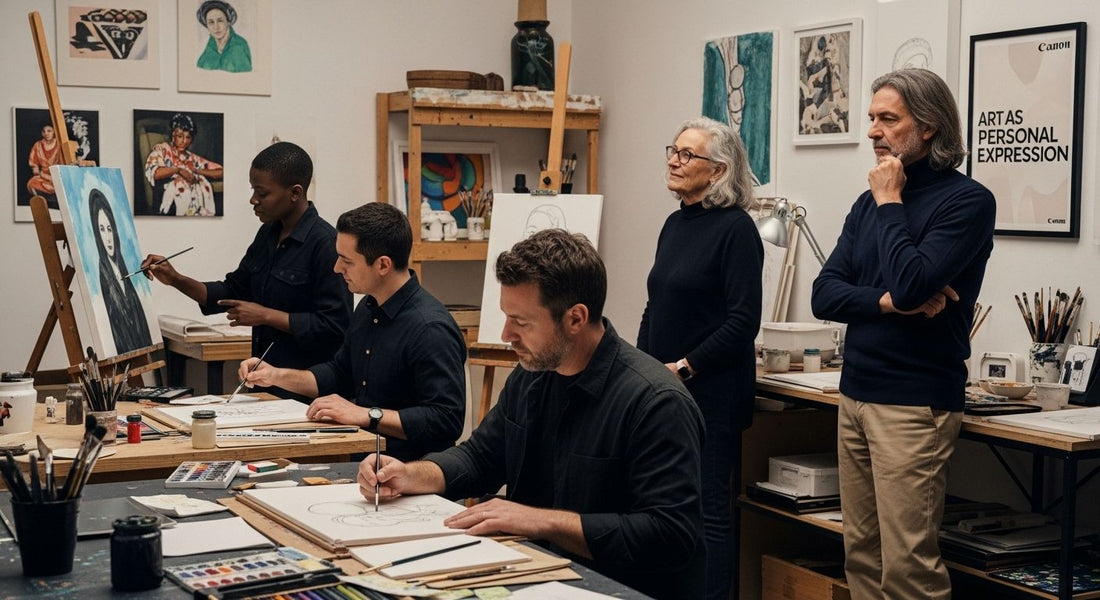
Understanding Art as Personal Expression: A Deep Dive
Art is often seen as something beautiful to look at or admire in a gallery. Yet, it is so much more than just color and shape. Research from the Rocky Mountain College of Art + Design shows that creative autonomy lets people discover unique artistic voices and genuine self-representation. Most people imagine art as a way to make things look pretty, but it actually works like a secret language for revealing your inner world in ways words never could.
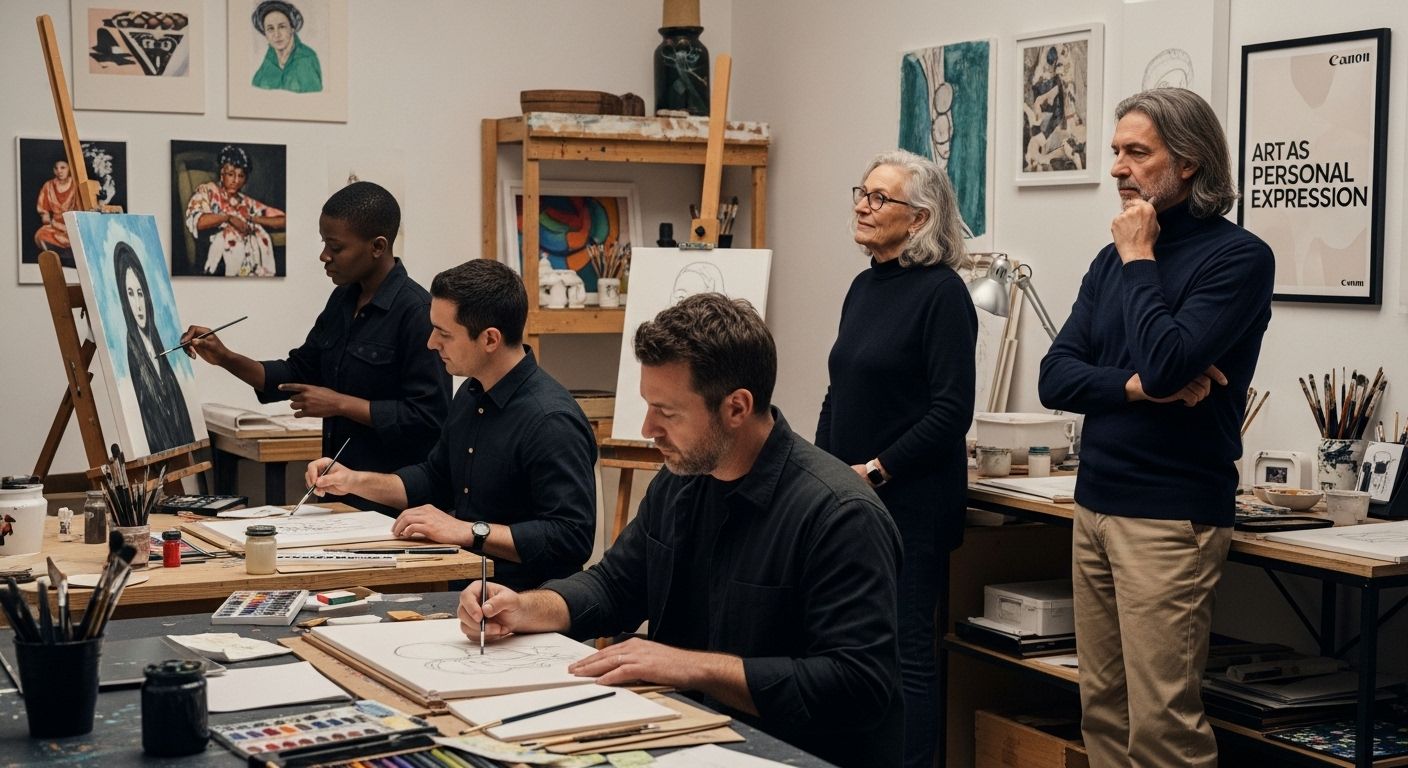
Table of Contents
- What Is Art As Personal Expression And Its Importance?
- The Relationship Between Emotion And Artistic Creation
- Exploring Different Forms Of Artistic Expression
- How Personal Experiences Shape Artistic Narratives
- The Impact Of Cultural Context On Art As Personal Expression
Quick Summary
| Takeaway | Explanation |
|---|---|
| Art as communication transcends words | Art enables artists to express complex internal emotions and experiences visually, going beyond traditional verbal communication. |
| Emotional experiences drive creativity | Artists use their emotional landscapes as a primary source, transforming feelings into powerful artistic expressions through various mediums. |
| Personal experiences inform artistic narratives | Individual memories and emotions shape artistic work, allowing personal stories to connect with universal themes of human experience. |
| Cultural context enriches artistic expression | The artist’s cultural background influences their creation, integrating personal narratives with broader societal themes and symbols. |
| Art facilitates emotional understanding and connection | Creating art serves as a journey of self-exploration, helping both the creator and the audience process complex emotions. |
What is Art as Personal Expression and Its Importance?
Art as personal expression represents a profound and intricate method of communication where individuals transform their inner emotional landscapes, thoughts, and experiences into tangible visual representations. This transformative process allows artists to convey complex feelings, perspectives, and narratives that often transcend traditional verbal communication.
Understanding the Core Concept
Personal expression through art goes beyond mere aesthetic creation. It serves as a powerful psychological mechanism where artists translate their internal world into external forms. Whether through painting, sculpture, photography, or digital media, artists utilize their chosen medium as a language to communicate deeply personal experiences, struggles, joys, and philosophical perspectives.
According to Rocky Mountain College of Art + Design, providing creative autonomy enables individuals to explore their unique artistic voices and develop authentic modes of self-representation. This process involves several critical elements:
- Emotional Translation: Converting complex feelings into visual narratives
- Personal Narrative: Expressing individual stories and experiences
- Psychological Exploration: Using art as a tool for self-understanding
The Psychological Significance
Personal expression through art functions as a profound psychological tool for self-discovery and emotional processing. By externalizing internal experiences, artists create a tangible representation of their inner world, which can serve therapeutic and communicative purposes. This creative process allows individuals to:
- Understand and explore their own emotions
- Process complex or challenging life experiences
- Communicate feelings that might be difficult to articulate verbally
- Challenge societal narratives and personal limitations
The act of creating art becomes a journey of self-exploration, where each brushstroke, color choice, or compositional decision reveals layers of the artist’s psychological landscape. Through this intimate process, art transforms from a simple visual medium into a deeply personal language of emotional and intellectual communication.
The Relationship Between Emotion and Artistic Creation
Emotional experiences are the foundational catalyst for artistic creation, serving as a profound internal mechanism that transforms abstract feelings into tangible visual representations. Artists leverage their emotional landscapes as raw material, converting complex psychological states into powerful creative expressions that communicate beyond traditional linguistic boundaries.
The Emotional Catalyst of Creativity
Art emerges as a direct manifestation of human emotional complexity. Emotions do not merely influence artistic creation they are the primary driving force behind creative expression. When artists engage with their inner emotional terrain, they tap into a deep reservoir of personal experiences, memories, and psychological states that become the primary source of their creative output.
According to Yale Child Study Center’s research, emotions play a multifaceted role in the creative process. They function not just as a spark for creativity but also as a critical component during the actual creation and as a regulatory mechanism for sustaining creative efforts.
The Emotional Translation Process
The emotional translation process involves several intricate psychological mechanisms:
- Emotional Encoding: Converting internal feelings into visual metaphors
- Psychological Distillation: Extracting core emotional experiences
- Creative Transformation: Reshaping raw emotions into artistic narratives
Artists do not simply reproduce emotions they reinterpret and reconstruct them through their chosen medium. Each brushstroke, color selection, compositional choice becomes a nuanced language of emotional communication. This process allows artists to explore and express feelings that might be challenging to articulate through conventional verbal communication.
The relationship between emotion and artistic creation represents a dynamic, reciprocal interaction where emotions inspire art, and art, in turn, generates new emotional experiences for both the creator and the audience. Through this intricate dance, art becomes a powerful mechanism for emotional exploration, understanding, and connection.
Exploring Different Forms of Artistic Expression
Artistic expression transcends traditional boundaries, encompassing a vast and diverse landscape of creative mediums that allow individuals to communicate their innermost thoughts, emotions, and experiences. Each artistic form offers unique channels for personal storytelling, enabling creators to translate their internal worlds through distinctive visual, auditory, and performative languages.
Spectrum of Creative Mediums
Artistic expression manifests through multiple interconnected domains, each offering distinctive modes of communication and emotional representation. These diverse forms include visual arts, performance arts, literary arts, digital arts, and multimedia expressions. Each medium provides artists with specific tools and techniques to explore and communicate their personal narratives.
According to ERIC’s educational research, exposure to varied artistic forms nurtures creativity, critical thinking, and profound self-understanding. The research emphasizes that different artistic mediums offer unique pathways for personal exploration and emotional articulation.
Characteristics of Artistic Mediums
Each artistic form carries distinct characteristics that influence how personal experiences are translated and communicated:
- Visual Arts: Painting, sculpture, photography
- Performance Arts: Dance, theater, music
- Literary Arts: Poetry, prose, storytelling
- Digital Arts: Interactive media, digital illustration, virtual reality
These mediums are not isolated but often intersect and influence each other, creating rich, hybrid forms of expression. An artist might combine digital illustration with performance elements or integrate photographic techniques into sculptural work, demonstrating the fluid and dynamic nature of artistic creation.
To clarify the differences between various artistic mediums and how each offers unique avenues for personal expression, the following table summarizes the key characteristics of each main creative form mentioned in the article.
| Artistic Medium | Examples | Distinctive Characteristics |
|---|---|---|
| Visual Arts | Painting, sculpture, photography | Focus on visual elements, static imagery, tactile or visual form |
| Performance Arts | Dance, theater, music | Movement, live engagement, temporal experience |
| Literary Arts | Poetry, prose, storytelling | Written or spoken word, narrative-driven, language-based |
| Digital Arts | Interactive media, digital illustration | Technology-driven, virtual/interactive, multimedia integration |
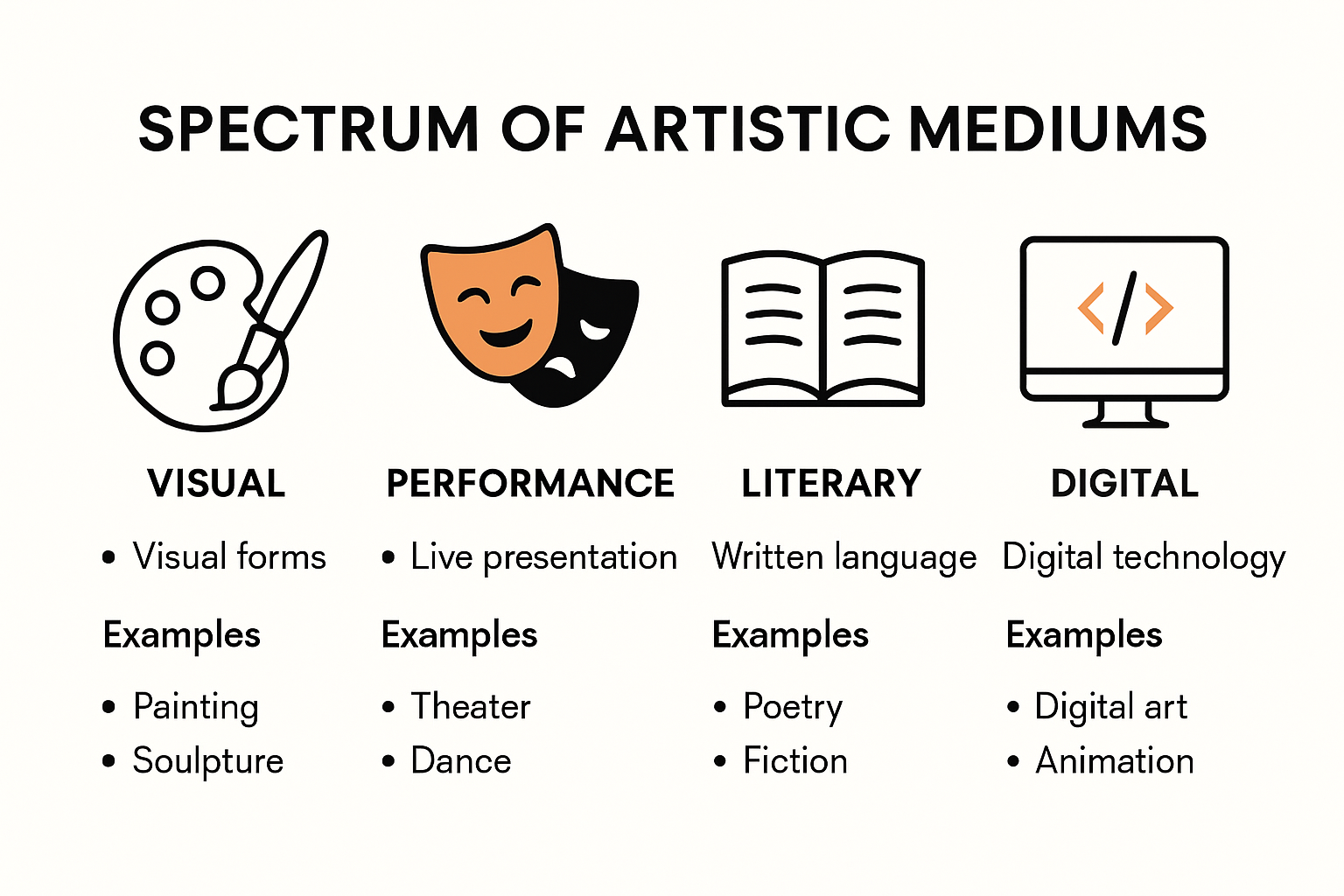
The beauty of artistic expression lies in its fundamental flexibility. Artists are not confined to a single medium but can explore, experiment, and blend different forms to most authentically represent their inner experiences. This adaptability ensures that personal expression remains a deeply personal, continuously evolving journey of creative communication.
How Personal Experiences Shape Artistic Narratives
Personal experiences serve as the foundational blueprint for artistic narratives, transforming individual memories, emotions, and life journeys into powerful visual and performative stories. These lived experiences become the raw material that artists meticulously process, reinterpret, and reconstruct through their chosen creative mediums.
The Personal as Universal
Artistic narratives emerge from deeply personal moments yet simultaneously transcend individual experiences to connect with broader human emotions. When artists draw from their unique life stories, they create work that resonates with universal themes of human struggle, joy, transformation, and resilience. The specificity of personal experience paradoxically becomes a gateway to collective understanding.
According to National Association of Elementary School Principals, art integration provides critical pathways for individuals to explore and communicate their personal identity narratives. This process allows creators to examine their experiences through creative lenses, transforming personal memories into meaningful artistic expressions.
Transformative Elements of Personal Narrative
Personal experiences shape artistic narratives through several key mechanisms:
To help readers visualize the process by which personal experiences are transformed into artistic narratives, the table below outlines the transformative elements mentioned in the article and how they contribute to creative expression.
| Element | Description |
|---|---|
| Emotional Mapping | Translating internal feelings into visual representations |
| Memory Reconstruction | Reinterpreting past experiences through creative lens |
| Cultural Context | Embedding personal stories within broader social frameworks |
| Psychological Processing | Using art as a mechanism for understanding personal experiences |
- Emotional Mapping: Translating internal feelings into visual representations
- Memory Reconstruction: Reinterpreting past experiences through creative lens
- Cultural Context: Embedding personal stories within broader social frameworks
- Psychological Processing: Using art as a mechanism for understanding personal experiences
Artists do not simply document their experiences they reimagine and reconstruct them. Each creative choice becomes a deliberate act of interpretation, where personal memories are filtered through aesthetic sensibilities, emotional landscapes, and creative imagination. This transformative process allows artists to move beyond literal representation, creating works that speak to deeper psychological and emotional truths.
The power of personal narrative in art lies in its ability to convert individual experiences into universal languages of human connection. Through creative expression, personal stories become bridges that link individual perspectives to collective human understanding, demonstrating the profound capacity of art to communicate complex emotional landscapes.
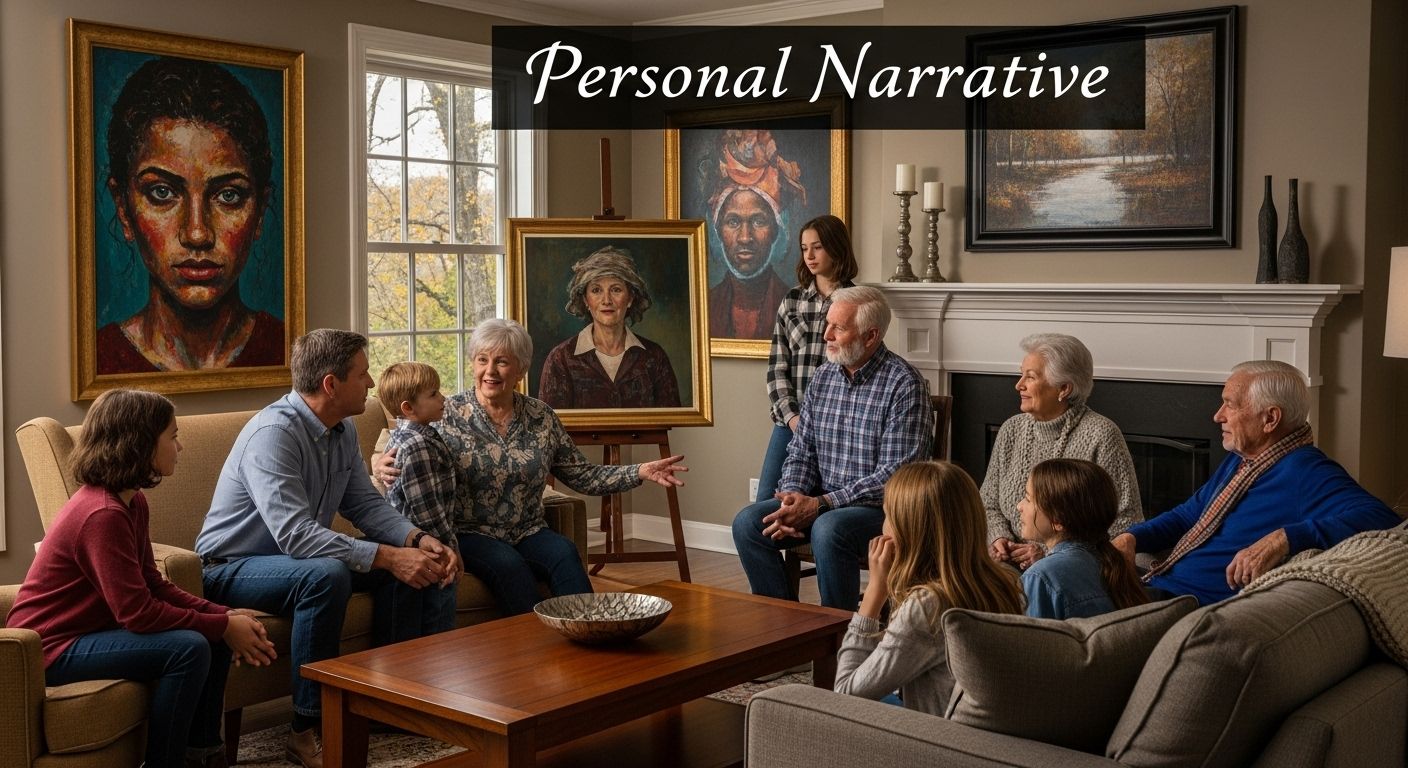
The Impact of Cultural Context on Art as Personal Expression
Cultural context represents a profound lens through which artists interpret, create, and communicate their personal experiences. It serves as an intricate framework that shapes artistic expression, providing both constraints and opportunities for creative exploration. Cultural backgrounds infuse artistic works with deep symbolic meanings, historical references, and collective narratives that transcend individual experiences.
Cultural Foundations of Artistic Identity
Every artistic expression emerges from a complex web of cultural influences that inform an artist’s worldview, aesthetic sensibilities, and narrative strategies. Cultural context encompasses traditions, social norms, historical experiences, religious beliefs, and collective memories that fundamentally shape how individuals perceive and represent their inner worlds. Artists do not create in isolation but are continuously engaged in a dynamic dialogue with their cultural heritage.
According to Howard Community College’s Humanities Research, art serves as a critical mechanism for communicating cultural values, ideologies, and collective experiences across generations. It functions as a visual language that captures the nuanced emotional and psychological landscapes of specific cultural communities.
Elements of Cultural Influence
Cultural context impacts artistic expression through multiple interconnected dimensions:
- Symbolic Representation: Using culturally specific imagery and metaphors
- Narrative Techniques: Storytelling approaches rooted in cultural traditions
- Aesthetic Preferences: Color palettes, compositional styles reflecting cultural aesthetics
- Emotional Expressions: Cultural norms governing emotional communication
Artists navigate these cultural influences by either embracing traditional representations or consciously challenging and reinterpreting them. This dynamic process allows for both preservation of cultural heritage and innovative personal expression. The result is a rich, complex artistic landscape where personal experiences are intrinsically linked to broader cultural narratives, creating works that are simultaneously intimate and universally resonant.
Transform Personal Expression into Lasting Art for Your Space
Are you searching for a meaningful way to bring personal expression into your home or workspace? The article shines a light on how deeply personal stories, emotions, and cultural experiences shape art. But it can be difficult to find artwork that truly mirrors your own journey, inspires daily reflection, or bridges your values with stunning visuals. If you want your environment to reflect personal narrative and emotional depth, the right canvas art can make an immediate impact. Explore our Community Event Participation Art – Exclusive Canvas Art collection, where every piece connects authentic stories and lived experiences for viewers like you.
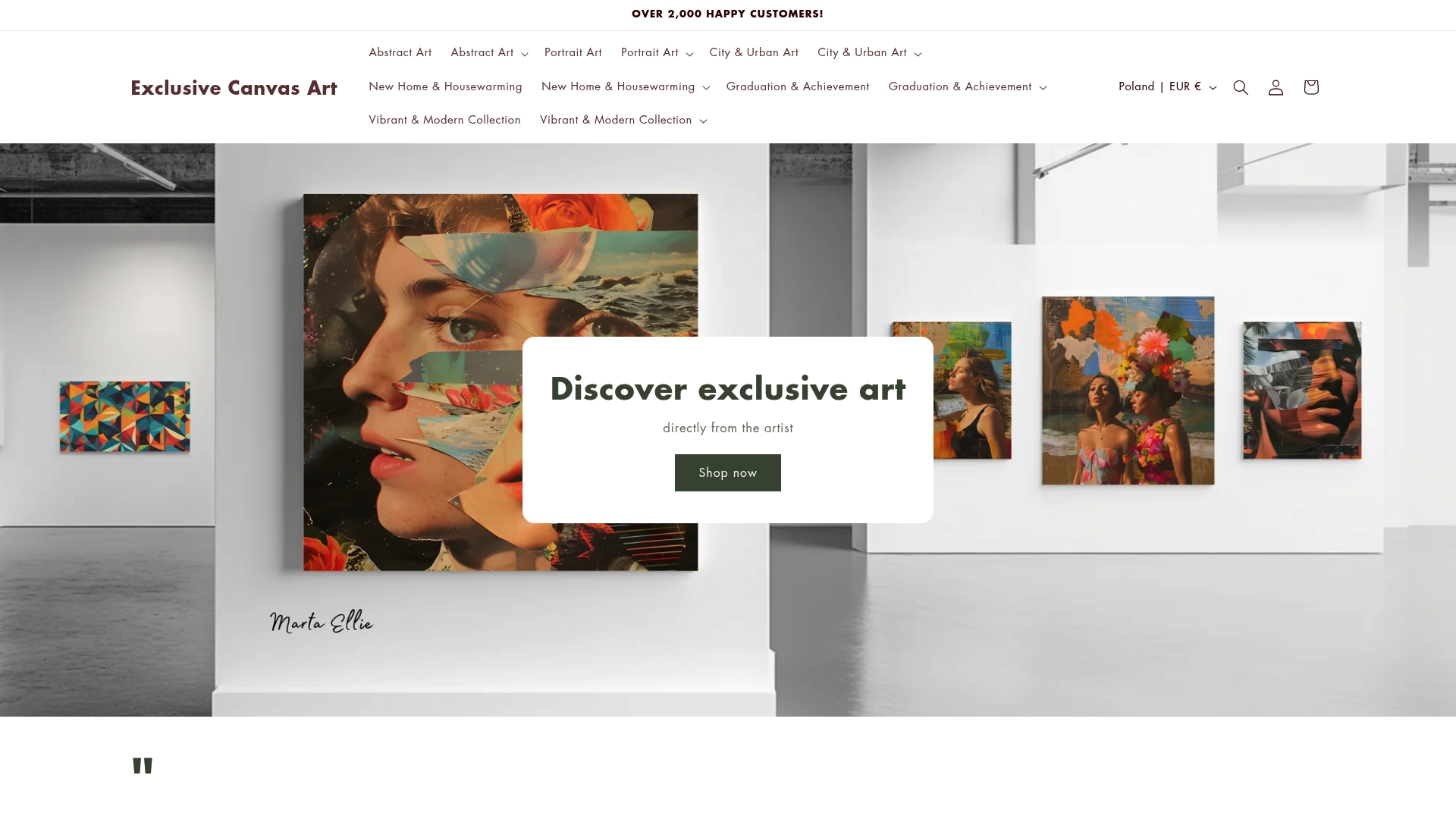
Powerful visual storytelling belongs in your space now. Visit Marta Ellie’s website to discover curated art that embodies genuine personal expression. Feel the difference that original, story-rich art can make. Let your walls speak the language of your experiences, or find new inspiration through our Volunteer Work Inspiration Art – Exclusive Canvas Art. Start browsing today and connect your own narrative to breathtaking original art.
Frequently Asked Questions
What is art as personal expression?
Art as personal expression is a method of communication where individuals transform their emotions, thoughts, and experiences into visual representations. This process allows artists to convey complex feelings and narratives that go beyond traditional verbal communication.
How does emotion influence artistic creation?
Emotion serves as the primary driving force behind creative expression. Artists tap into their emotional landscapes to create art, translating complex psychological states into tangible forms that communicate their inner experiences.
What are different forms of artistic expression?
Artistic expression encompasses a variety of mediums including visual arts (e.g., painting, sculpture), performance arts (e.g., dance, theater), literary arts (e.g., poetry, prose), and digital arts (e.g., digital illustration, interactive media). Each medium offers unique ways for artists to communicate personal narratives.
How do personal experiences shape artistic narratives?
Personal experiences serve as the foundation for artistic narratives, allowing artists to transform their memories and emotions into powerful stories. These lived experiences become the raw material for creative expression, often connecting personal stories to universal themes.
Recommended
- Narrative in Art Collections: Creating Meaningful Spaces – Exclusive Canvas Art
- Why Collect Contemporary Art: Value, Decor, and Inspiration 2025 – Exclusive Canvas Art
- Art Appreciation Basics: A Guide for Collectors and Decorators 2025 – Exclusive Canvas Art
- Understanding Art Composition: A 2025 Guide for Collectors and Decorat – Exclusive Canvas Art
- African Art Symbolism: Meaningful Decor for 2025 Homes - Art-Online